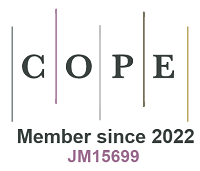Review | Open Access
Fluorescent organic cages and their applications
Views: 134
Chem. Synth. 2025;5:[Accepted].
Author Information
Article Notes
Cite This Article
Abstract
Organic Cages are an emerging subclass of crystalline porous materials with structural tunability, modularity, and processibility, having exhibited potential in applications such as molecular recognition, gas adsorption, catalysis, and other fields. Fluorescence can be easily introduced into organic cages via incorporating fluorescent building blocks. The diversity of fluorescent building blocks and well-developed cage construction methods allowed the booming of fluorescent organic cages. More importantly, incorporating fluorescent properties into organic cages can further expand its application areas, especially in fields like biological imaging and luminescent devices. The cavity of organic cages endows them extra confined space to accommodate bioactive species or drugs compared to fluorescent small molecules. Compared to their framework counterparties, organic cages with well-characterized structure exhibit better processability, allowing their use in applications beyond solutions. In this review, we summarize the latest progress on fluorescent organic cages, focusing on their construction methods and the recent advances in their applications.
Keywords
Organic cages, fluorescent, synthesis strategies, applications
Cite This Article
Jia Z, Kai A, Liu M. Fluorescent organic cages and their applications. Chem. Synth. 2025;5:[Accept]. http://dx.doi.org/10.20517/cs.2024.147
Copyright
© The Author(s) 2025. Open Access This article is licensed under a Creative Commons Attribution 4.0 International License (https://creativecommons.org/licenses/by/4.0/), which permits unrestricted use, sharing, adaptation, distribution and reproduction in any medium or format, for any purpose, even commercially, as long as you give appropriate credit to the original author(s) and the source, provide a link to the Creative Commons license, and indicate if changes were made.












